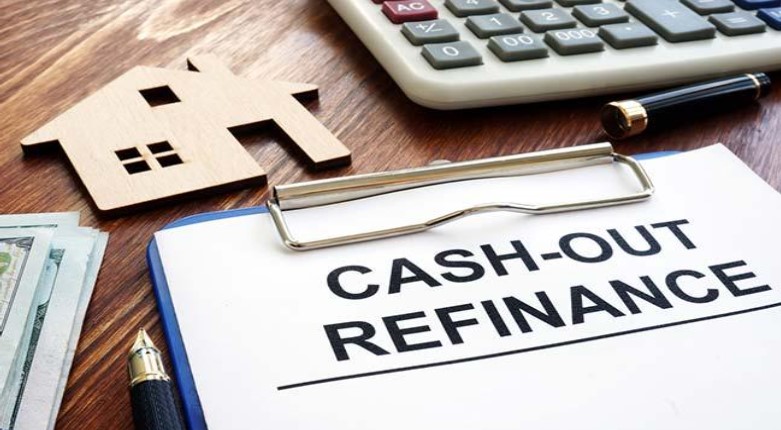How Cash-out Refinansiering Works?

Paying down a housing loan helps build equity in the person’s house (one of the reasons mortgages is considered good debts to have). But homeowners do not have to wait to repay their mortgage in its entirety or sell their houses to access these equities. Individuals can convert their equity into physical money and continue paying their mortgage off with cash-out refi.
What are cash-out refinances?
This thing replaces the current home loan of an individual with another, bigger housing debenture, allowing them to access the difference between the two credits (the current and the new one) in physical money. The amount is based on the value of the property’s equity homeowners built up over the course of the debenture’s life. The money can go toward any purpose, like consolidating high-interest debt, remodeling, and other financial needs.
How do these things work?
The process for cash-out remortgages is similar to regular mortgage refi (or rate-and-term refi), in which individuals simply replace their existing debentures with new ones, usually at lower interest rates (IRs) or for shorter debenture terms or both. Although, with this kind of remortgage, people also withdraw part of their property’s equity in lump sums.
So, their new debenture amount will be a lot higher – by the amount equal to the home equity they are drawing upon. For instance, say the remaining balance on the person’s current housing loan is one hundred thousand dollars, and their house is currently worth three hundred thousand dollars. In this case, they have two hundred thousand dollars in equity.
Let us assume that remortgaging the current housing loan means individuals can get a lower IR, and they will use the funds to renovate their bathroom and kitchen. Financial institutions like traditional banks, credit unions, or online lending firms usually require homeowners to maintain at least 20% equity in their house (although there are always exceptions) after cash-out remortgages.
So, using the example mentioned above, the homeowner will need to have at least sixty thousand dollars in equity or be able to borrow up to one hundred forty thousand dollars in cash. People will also need to pay closing costs such as appraisal fees and administrative expenses (yes, lending firms will appraise the house) on the new debenture.
So the ultimate amount of money people net from their refi could end up being substantially less compared to the actual value of the equity they have. They tend to pay more in IR after completing cash-out refi because they are increasing the debenture amount. Otherwise, the steps of this type of refi should be similar to their first housing loan application.
Preparing to cash-out remortgages
Here is how people should prepare for cash-out remortgages
Find out the financial institution’s minimum requirements
Financial institutions have different qualifying requirements for this kind of remortgaging. Most need borrowers to have at least a 620 credit score – the higher score, the better – although some lending firms will accept a score as low as 580. Other common requirements include DTI or Debt-to-Income ratio below 50 (some need below 43) and at least 20% equity in their homes. As people look at their options, they need to remember these requirements.
Check out https://www.va.gov/housing-assistance/home-loans/loan-types/interest-rate-reduction-loan/ to know more about IRs on these types of financing.

Find out the number of funds that you need
If you are considering cash-out refi, there is a good chance that you will need funds for certain purposes. If you are not sure what that amount is, it can be pretty helpful to nail it down, so you only borrow what you need. For example, suppose individual plans to use these funds to consolidate debts.
In that case, individuals need to gather their credit card and personal debenture statements or info about other debt obligations and add up what they owe. If the money is to be used for repairs and renovations, they need to consult with a couple of contractors to get estimates for both materials and labor ahead of time.
Prepare the application form
Once the borrower has shopped around for a couple of lending firms to make sure they get the best terms and rates, people need to prepare all of their financial info related to their debt and assets, as well as their income, for the application process. Individuals should keep in mind that they might need to submit other documents as lending firms evaluate their applications.
When should people get this type of remortgage?
These things are pretty beneficial if individuals can reduce the IR of their main mortgage and make excellent use of the money they take out. People should be mindful that given today’s current economic situation, it is highly unlikely they will get a lower IR unless rates were on higher ends when they took out their current loan and their score has significantly improved. Still, these things when IRs is higher may be pretty helpful if the money will be used to improve the property’s value, and it is a lot cheaper compared to high-interest credit cards.
Advantages of cash-out remortgaging
Before deciding to push through with this kind of refinancing, it is imperative to consider the advantages.
People can lower their interest rate
It is the most common reason most individuals refinance, and it makes a lot of sense to refi as well. Obviously, people want to pay as little on IR as possible when taking out large loans.
The cost to borrow funds could be a lot lower
This thing is usually a less expensive type of financing since mortgage refi rates are usually lower compared to rates on personal debentures like home improvement debentures or credit cards. Even with closing costs, it can be very advantageous when individuals need a significant amount of funds.
People can improve their credit rating
If people do this kind of financing and use the money to pay off existing debts, they could see an increase in their score if their credit utilization ratio dips down. Credit utilization, or how much a person is borrowing compared to what is available to them, is an important factor in their credit score.
Borrowers can take advantage of certain tax deductions
If an individual is planning to use the money for property improvements and it meets Internal Revenue Service eligibility requirements, they could take advantage of the deductions during tax season.
Is it the right option for borrowers?
It can be an excellent idea for most individuals. Housing loan rates are on the rise. But the collateral involved in these things means that lending firms take on relatively little risk. They can also afford to keep remortgage rates pretty affordable. It means that it is one of the cheapest ways to pay large expenses. Most property owners use the funds for the following reasons:
Property improvement projects
Owners who use lav rente refinansiering – buzrush (low-interest refinancing – buzrush) for home improvements can deduct the housing loan interest from their taxes if it can substantially increase their house’s value in the long run.
Investment purposes
It offers property owners access to capital funds to help them build their retirement savings or buy investment properties.
Consolidating high-interest debts
Refi rates tend to be much lower than other forms of debt like personal debentures and credit cards. Proceeds from remortgaging processes allow people to pay these credits off and pay the debenture back with a single and lower-cost monthly amortization instead.
Kid’s college education
Education is very expensive, so tapping home equity to pay for tuition fees can make a lot of sense if the rate is much lower compared to the rate on student loans




